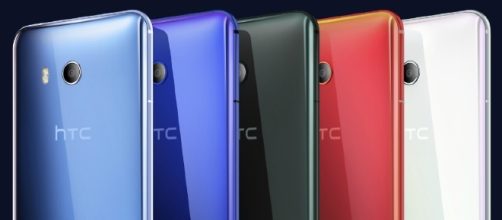Taiwanese smartphone maker, HTC, unveiled on Friday its latest premium smartphone, the HTC U11. Informally known as the 'squeezable' handset, due to its unique software features, the U11 comes with a competitive spec sheet and brilliant aesthetics. With the new offering, HTC is once again planning to compete with Samsung's Galaxy S8, the OnePlus 5 and LG's G6.
Power and storage
To kick things off, HTC's U11 packs Qualcomm's Snapdragon 835 SoC, which houses eight Kyro cores, four clocked at 2.45 GHz and another four at 1.9 GHz Kryo, and Adreno 540 GPU.
It comes in two storage options; one with 64GB and 4GB of RAM and the other with 128GB and 6GB of RAM. Both options are expandable via microSD up to 256GB.
Similarly, the OnePlus 5 is powered by Qualcomm's Snapdragon 835 SoC and Adreno 540 GPU. Storage wise, two non-expandable options are available; one at 64GB with 6GB of RAM, and the other at 128GB with 8GB of RAM.
Underneath the hood, the Galaxy S8 packs Qualcomm's Snapdragon 835 processor with Adreno 540 GPU, in China and the US. In Europe, it comes with Exynos 8895 Octa, which features eight cores, four clocked at 2.3 GHz the rest at 1.7 GHz, accompanied by Mali-G71 MP20 GPU. The S8 is available with one storage option, at 64GB, expandable via microSD up to 256GB, featuring 4GB of RAM.
Display and camera
HTC's flagship device boasts a 5.5-inch 1440 x 2560 Super LCD5 display, with 534 ppi, covered by Corning Gorilla Glass 5. A 12MP camera has been placed on the back, packing phase detection autofocus, OIS, dual-LED flash, HDR, and 2K video. The front one shoots at 16MP and records full HD video.
The OnePlus 5 packs a 5.5-inch full HD Optic AMOLED display on the front, with 401 ppi, covered by Corning Gorilla Glass 5. Camera-wise, the Chinese smartphone touts a dual-camera setup, featuring a 16 MP primary shooter and a 20MP telephoto lens in support. That combination enables users to take portrait-style photos, while also improving digital stabilization as well. Camera features include 2K video recording, HDR, dual-LED flash, phase detection and 2x optical zoom.
A 16MP front camera with 1080p video and auto HDR is embedded on the front.
Samsung's Galaxy S8 sports a 5.8-inch 1440 x 2960 Super AMOLED display, with a 570 ppi, also covered by Corning Gorilla Glass 5, offering functionalities such as 3D Touch and the always-on feature. A 12MP shooter sits on the back, with a 1/2.5" sensor size, accompanied by phase detection, OIS, LED flash, 4K video recording, and Auto HDR. The front camera shoots at 8MP and comes with 1440p video (30FPS), autofocus and auto HDR as well.
Extra features and battery
The U11 features a long list of extra goodies, including a front-mounted fingerprint sensor, accelerometer, Type-C connectivity, Quick Charge 3.0 and HTC Sense Edge.
For those unfamiliar with the latter, Sense Edge uses the pressure sensors embedded on both sides of the smartphone, thus allowing squeeze-based interactions with it. The video below illustrates how the feature works. Moreover, a non-removable 3,000mAh battery accommodates the high-end spec sheet.
The OnePlus 5 sports a front-mounted fingerprint sensor, accelerometer and quick charging (Dash Charge). It is powered by a non-removable Li-Ion 3,300mAh battery.
Samsung's Galaxy S8 features Iris scanner, a rear-mounted fingerprint sensor, accelerometer, barometer, heart rate, QuickCgarge 2.0, Qi/PMA wireless charging, Samsung DeX, and S-Voice. A non-removable Li-Ion 3,000mAh has been incorporated.


